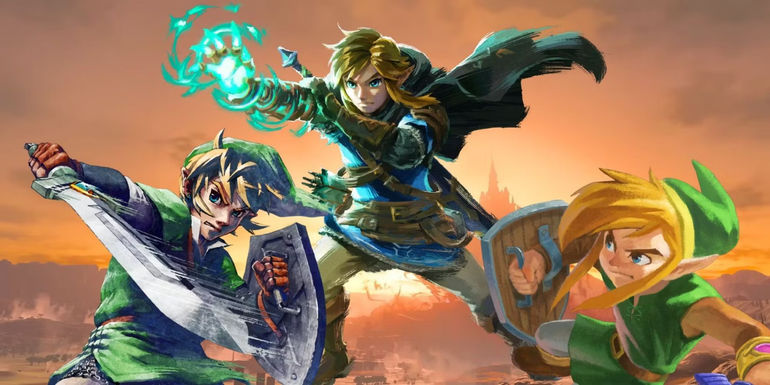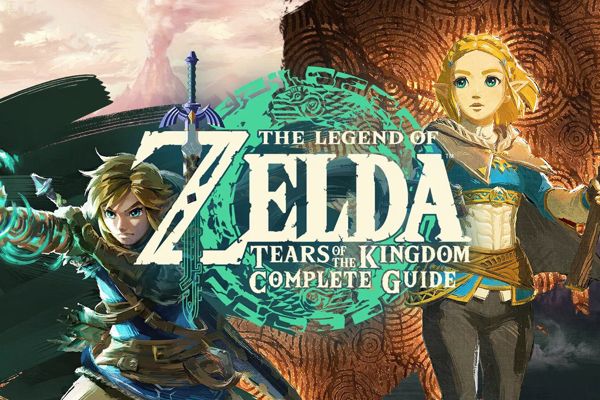
Bringing Link to the Big Screen: The Challenge of Non-Verbal Representation

The upcoming Legend of Zelda movie faces the challenge of bringing the iconic character, Link, to the big screen in a way that honors his traditional portrayal in the video games. This article discusses the rare opportunity for non-verbal representation in Hollywood and the challenges it presents for the movie adaptation.
The Enigma of Link: A Hero Without Words
Bringing Link, the iconic hero of Hyrule, to the big screen is not without its challenges. In the Legend of Zelda video games, Link's personality is left somewhat ambiguous, allowing players to form their own interpretations of who he is. This presents a unique challenge for the movie adaptation, as it must capture the essence of Link without straying too far from the character's traditional portrayal.
Zelda TOTK Three Links Art (1)
Link's journey began in 1986 with the release of The Legend of Zelda for the Nintendo Entertainment System. Throughout the early titles, the character was depicted as a brave hero with little defined personality. The introduction of the first 3D version of Link in The Legend of Zelda: Ocarina of Time in 1998 marked a significant shift in the character's portrayal, as his personality was conveyed through facial expressions rather than overt dialogue. This enigmatic portrayal of Link has persisted throughout the series, creating a unique challenge for the upcoming movie adaptation.
The Ocarina of Time manga has details of Link's design not explored in the game.
The challenge of bringing a non-verbal character like Link to the big screen is further compounded by the risk of deviating from his traditional portrayal. The 1989 animated Legend of Zelda TV series demonstrated the potential pitfalls of giving Link a voice, as it portrayed him as loud, cocky, and contrary to the silent hero fans had come to know. The movie adaptation must find a way to honor Link's traditional lack of dialogue while effectively conveying his character to the audience.
Artworks of Link from Spirit Tracks, Ocarina of Time, Majora's Mask, and the Game Boy Advance A Link to the Past Remake in front of the Hyrule Castle from Breath of the Wild.
The Rare Opportunity for Non-Verbal Representation
The prospect of featuring a non-verbal protagonist like Link in the Legend of Zelda movie presents a rare opportunity for non-verbal representation in Hollywood. Non-verbal individuals, including those with trauma and autism, are seldom represented on screen, especially in leading roles. Link's traditional portrayal as a silent hero aligns with the challenge of bringing non-verbal representation to the forefront of the movie adaptation.
The image of Tears of the Kingdom's key art showing Link looking over the edge of a floating island, overlaid by Ocarina of Time's Link riding Epona.
The potential for Link to communicate through non-verbal means, such as regional signed language or manual communication methods, opens up new avenues for representation and storytelling. By incorporating non-verbal communication into the fantasy world of Hyrule, the movie could provide a platform for the inclusion of non-verbal and Deaf individuals in the creative process, further enriching the representation of non-verbal characters in mainstream media.
In the foreground, Breath of the Wild's Link holds the Master Sword pointing upward in front of his face. In the background, Link pulls the Master Sword from its pedestal in the lush Korok Forest.
While the prospect of non-verbal representation in the Zelda movie is promising, it also presents significant challenges, including the casting of the right actor to portray a non-verbal Link. The movie must navigate the complexities of representing a non-verbal character while staying true to the essence of the beloved video game character. Additionally, the diverse interpretations of Link among fans pose a challenge in creating a portrayal that resonates with the audience.
Link from Breath of the Wild and Link from Tears of the Kingdom set against a golden background.
Challenges and Considerations for a Non-Verbal Protagonist
The inclusion of a non-verbal protagonist like Link in the Legend of Zelda movie brings with it several challenges and considerations. Finding the right actor to portray a non-verbal Link requires careful consideration of representation and expressive capabilities. The movie adaptation must balance the need for authenticity with the expectations of fans who have formed their own interpretations of the character.
The Malice-coated Akkala Tower in The Legend of Zelda: Breath of the Wild, with character art of Link from Skyward Sword.
Furthermore, the implied dialogue of Link in the video games adds complexity to the portrayal of a non-verbal character in the movie. While some fans may embrace the idea of a non-verbal Link, others may struggle to reconcile their personal interpretations of the character with the movie adaptation. The challenge lies in navigating the diverse perceptions of Link while staying true to the character's essence and providing a representation that resonates with a broad audience.




















